Have you ever cycled to enjoy a tour? If you want to experience a novel way of traveling, our China Bike Tour is a perfect choice for you. In the 7 Days Beijing-Xining-Qinghai Lake-Xining Tour, you will visit tourist attractions in Beijing, such as the Forbidden City, Summer Palace, and Badaling Great Wall. Of course, you will have an opportunity to cycle around Beijing on the Beijing Biking Tour. You could hang out the Wangfujing Street by bicycle and it’s convenient for you to stop at any shop you like. After visiting Beijing, your next destination is Xining, the capital city of Qinghai province. Our Qinghai Lake China Bike Tour will let you experience the top road cycling race on the Huanhu West Road. And you will also visit the Jiayi Temple, Qinghai Lake, and Heima River. Therefore, In the Qinghai Lake Biking tour, you will see not only the largest saltwater lake in inland China but also feel the history and culture here. Isn’t it interesting? Don’t hesitate and join us soon!

Welcome to Beijing! Our guide is waiting for you at the airport arrival hall. After meeting you, we will drive you to the hotel.
Beijing, “Jing” for short, is the capital of the People’s Republic of China. It is the political and cultural center of China. Beijing boasts the most world heritage sites in the world, and it is the first capital city in the world that owns a global geopark. Beijing has opened more than 200 tourist attractions, including the Forbidden City, the Temple of Heaven, the Summer Palace, the Badaling Great Wall, the Mutianyu Great Wall, Hutong, and so on. In addition, you can go to the Universal Beijing Resort, the largest of its kind in the world, to enjoy theme parks, recreational facilities, and delicious food. In the following days, we will take you to visit some of these attractions. When it comes to Beijing specialties and local culture, it’s necessary to mention Peking Roast Duck and Peking Opera. Peking Roast Duck has crispy skin and tender meat and you will be attracted once you give it a shot. Peking Opera, one of the five major traditional operas in China, combines music, vocal performance, mime, dance, and acrobatics. If you are interested in it, you could learn some tones of Peking Opera here in Beijing, and then you will surely amaze your friends when you go back.
This morning, we will walk around Tian’anmen Square in the center of Beijing. Tian’anmen Square is 500 meters from east to west and 880 meters from north to south. It covers an area of 44 hectares. There are the National Flagpole, the Monument to the People’s Heroes, the Chairman Mao Memorial Hall, and the Zhengyangmen Gate Tower standing in sequence from north to south in the square. The square is acclaimed as the biggest square in the world and can hold 1 million people for grand gatherings. On October 1, 1949, the founding ceremony of the Central People’s Government of the People’s Republic of China was grandly held at Tian’anmen Square. From that moment on, Tian’anmen Square becomes the symbol of new China and an important place for the People’s Republic of China to hold major celebrations, gatherings and to receive foreign guests.
Then continue going north and you will come to the Forbidden City (closed each Monday), the Chinese imperial palace during the Ming and the Qing Dynasties (1368-1912). It is the world’s largest palace complex and covers a total area of 720,000 square meters (178 acres). The Forbidden City is composed of two parts. The Outer Court includes three halls used for ceremonial activities, such as coronations, investitures, and imperial weddings. Apart from the ceremonies, the Outer Court also houses the archives and Imperial Library. The Inner Court contains another three halls used for daily affairs of state. You may wonder why it is called “The Forbidden City”. In ancient times, ordinary people were not allowed to step their feet on this place. Therefore, it is called Forbidden City. Today, the site is commonly known as Gu Gong, which means the “Former Palace”. As the most attractive sightseeing point in Beijing, it is no longer “forbidden” to ordinary people. On the contrary, it welcomed countless tourists at home and aboard every year. If you want to know more about imperial life in ancient China and hear some anecdotes of royal families, you must not miss the Forbidden City.
After lunch, we will go to the Temple of Heaven, where the emperors of the Ming and Qing dynasties worshipped heaven and prayed for good harvests. It was built in the 18th year (1420) of the Yongle period in the Ming Dynasty. There is an Imperial Vault of Heaven, which houses the memorial tablets of the heavenly god and the former eight generations of the emperor. It’s very interesting that the wall of the Imperial Vault of Heaven can transmit sound. That means if you speak in a low voice near the wall, your partner can hear the sound even he stands tens of meters away from you against the wall. Scientists haven’t been able to find any reasonable explanations for the acoustic effect for a long time. In 1953, however, when Professor Tang Dingyuan tested the echoing effect of the Imperial Vault of Heaven, he found that the Imperial Vault of Heaven is so well enclosed and the walls are so smooth that the sound waves could not be absorbed by the walls. Thus, the echoes come into being, forming a unique acoustical phenomenon. Therefore, the walls in the imperial vault are nicknamed “Echo Walls”. When you visit the Temple of Heaven, you can approach the wall to see whether you can hear some sounds.
As this is Beijing Bike Tour, you will get a biking experience when you visit Wangfujing Street. It is a commercial street and is 1818 meters long. The street had the name Wangfujing in 1915. During the Liao (907-1125) and Jin dynasties (1115-1234), Wangfujing was just an unknown village. After Kublai Khan, the Emperor of the Yuan dynasty ruled China from 1260 and chose Beijing as the capital, the small village Wangfujing became bustling and was called “T-shaped Street”. In the Reign of Emperor Zhu Di of the Ming dynasty, ten princes’ residences were built here. Besides, there is a well, whose water is sweet and clean. Therefore, the street is finally named Wangfujing Street. Wangfu means “prince’s residence” and Jing means “water well”. Now, it serves as one of the most famous commercial streets in Beijing. When you biking on the street, you can stop at any store you want. Maybe you can taste the local snacks like Sugar coated haws on a stick or buy some traditional Chinese handicrafts such as paper cutting and clay figurines.
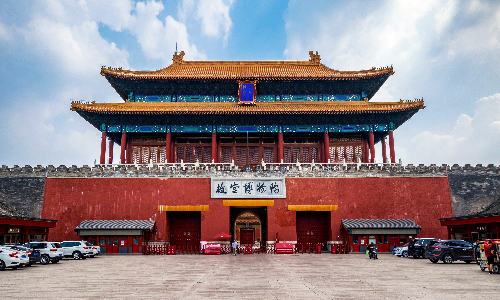
This morning, we will drive northward for about an hour to the Ming Tombs, 50 kilometers away from the center of Beijing. Thirteen emperors of the Ming dynasty were buried here so it is also known as “The Thirteen Ming Tombs”. What’s more, there are seven tombs for concubines and one grave for eunuchs. The Ming Tombs is the best-preserved imperial tomb cluster with the largest number of emperors buried in the world.
At the moment, Chang Tomb, Ding Tomb, and Zhao Tomb are accessible to visitors. Here we just introduce the Chang Tomb, the largest, oldest, and the best-preserved one among the thirteen tombs. It was built in 1409 and it took four years to complete construction. It is the tomb of Emperor Zhu Di, the third emperor of the Ming dynasty. It is Emperor Zhu Di who selected Beijing as the capital of the Ming Dynasty. And he is also the first emperor that was buried here. Therefore, the Chang Tomb is one of the main tombs in all 13 mausoleums. It covers a total area of 120,000 square meters. All the halls in the forecourt are covered with yellow glazed tiles on the roofs. It looks as resplendent as the Forbidden City. There is a tower called Ming Lou (Bright Tower) in the second yard. It is used to store memorial tablets and is the most attractive sightseeing spot of Chang Tomb. The buildings here are all built delicately. And you can feel the dignity of imperial tombs here. If you want to know more about ancient Chinese funeral culture, you can join us, and then we will take you to explore more details.
After lunch, you will be driven to the Badaling Great Wall, 36 kilometers west of the Ming Tombs. It takes 40 minutes to get there. several parts of the Great Wall have opened to tourists and Badaling Great Wall is the first one. Here is an interesting story about the origin of its name. It is said that there was an emperor of the Yuan Dynasty named Bada Lili. One day he passed by this part of the Great Wall and felt the scenery here is spectacular. So, he named this part of the Great Wall with his name Bada. Therefore, it is commonly known as “Badaling”. As an important military project, Badaling Great Wall played an important part in protecting the capital Beijing in ancient times. Because it is the only way to enter Beijing from the north at that time. In addition, it’s worth mentioning that Badaling Great Wall has received the most heads of state and government, such as Nixon, Reagan, Bush, Elizabeth II, Thatcher, Putin, Mandela. In total, more than 400 heads of state and government, as well as many world’s influential figures have been to the scenic spot and praised it a lot. We can say that the Badaling Great Wall also plays an important role in the diplomatic history of new China.
Option: In the evening, you can appreciate the Great Wall with bright moonlight and colorful lights from 19:30 to 21:30. If you plan to see the nightscape of the Badaling Great Wall, you also need to pay attention to the date, as it is just open every Friday and Saturday, as well as some important holidays such as the Dragon Boat Festival and National Day holidays. Besides, the number of tourists is limited to 300 people. Therefore, it’s necessary to reserve in advance. You will see many beautiful girls wearing traditional Han Chinese costumes. If you are lucky, you may see them dancing on the Great Wall. If you like them, you can take photos with them. While walking on the Great Wall, you may feel you have transferred hundreds of years ago.
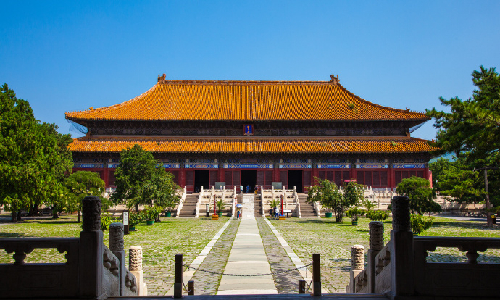
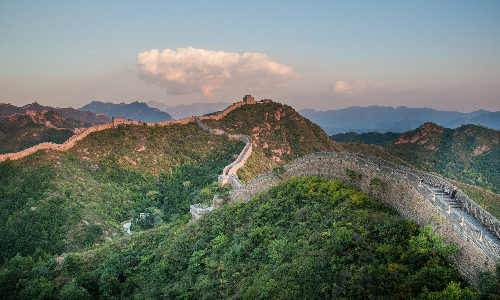
 Xining
Xining This morning, we will visit the Summer Palace, the most well-preserved imperial garden. It covers a total area of 290 hectares. It was built in 1750 and it took about 15 years to complete the garden. Later, the Empress Dowager of the Qing Dynasty (1644-1912) rebuilt the palace and named it “Yihe Yuan”, which means “the garden to maintain the balance of the vital breath in the universe”. Besides, the empress used the palace to spend her summertime so the palace is translated into “Summer Palace” in English. In the Summer Palace, you will see a Longevity Hill. This hill got its name because Empress Dowager desired to live a long life. As Empress Dowager took the power after her husband’s death, she often had to meet officials and deal with government affairs even when she was spending relaxing summertime here. For the sake of convenience, a special palace area and living quarters were built in the front of the garden. Therefore, the Summer Palace became a large imperial garden with dual functions as “palace” and “garden”. Come and join this China tour. And you will have a chance to visit this unique China garden in person.
After visiting the Summer Palace, you will be transferred to the airport and head to Xining by taking the estimated flight CA1261 14:10/18:40. Your tour guide will be waiting for you at the arrival lobby and then transfer you to the hotel.
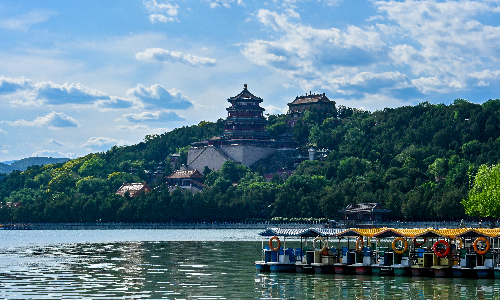
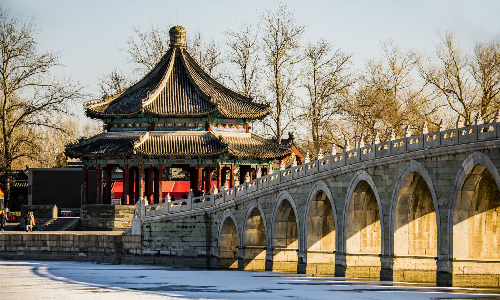
Today you will have a long-time biking experience. Are you excited? First of all, here are tips for you while taking a bike. First, you’d better carry a backpack containing chocolate, beef jerky, and other snacks to supply your physical strength in time. In addition, if you're cycling at 20 kilometers per hour, you must drink water about every 15 minutes. Third, it’s necessary to wear tight and long-sleeved clothes to decrease the resistance of wind and protect your skin from sunshine and cold air. By the way, gloves, helmets, and glasses are also very important. If you are ready, then let’s start our bike tour.
First, we will drive westward for about two hours to the Jiayi Temple, 130 kilometers away from Xining downtown. It is located on the south bank of the famous Qinghai Lake. It covers a total area of 33 hectares. Built in 1984, it was one of the places for Panchen Masters to rest while heading to Tibet. It belongs to Labuleng Temple, one of the six great temples of the Gelu School of Tibetan Buddhism. If you go to the Jiayi Temple, you could see a 28-meter high Maitreya Buddha. It is the largest Maitreya Buddha statue in China, and the largest bronze and gold-plated Buddha statue standing outside in Asia. And there are also other statues here. Many people pray in front of the Buddha statues and wish their families and friends good health. What’s more, there is a gold-plated pagoda decorated with bronze and silver. It is 13.9 meters high. In the front of the pagoda are statues of lions and a Buddha. It is said that the Buddha once offered consultation and made up prescriptions to patients. So local people believe that worshiping this Buddha can get health forever. On the whole, you will immerse yourself in the culture of Tibetan Buddhism when you come and visit Jiayi Temple.
After visiting the Jiayi Temple, we will ride to Qinghai Lake. Located in the northeast of the Qinghai-Tibet Plateau, it is China’s largest inland lake. It covers an area of 4,543 square kilometers. The maximum water depth of this oval lake is more than 30 meters. There are various fish and islands and it is the dreamland for most cycling enthusiasts. There is a legend about the origin of Qinghai Lake. It was said before Princess Wencheng of the Tang dynasty married Songtsan Gambo, king of the Tubo Kingdom, over 1,000 years ago, the emperor of Tang gave her a magical mirror, which could show her hometown. On the way to Tubo, the princess missed her hometown so much that she took out the mirror and watched her hometown for a long time. Tears welled up in her eyes. However, the princess suddenly remembered her mission and she knew the purpose of her marriage was to keep the peace between the Tubo Kingdom and Tang Dynasty. Therefore, she resolutely threw the mirror away. Unexpectedly, the mirror did not break into pieces but flashed a golden light and then turned into Qinghai Lake. While viewing the lake, you could find the water is cyan. The water is as clear as a mirror and it can release your pressure and give you enlightenment. You will spend some time here riding around Qinghai Lake.
Our last attraction is the Heima River, which is located in the Heima River Town. It is next to Qinghai Lake. If you ride 70 kilometers from here, you will get to Bird Island, where there are thousands of migrant birds. The road between Heima River and Bird Island is known as the Huanhu West Road. It is the most beautiful part of Qinghai Lake which presents different beauty in different seasons. In May, wildflowers bloom and thousands of birds fly to Heima River; in August, ten thousand acres of rape flowers are in full bloom on the river bank and it looks like a golden carpet in a distance; in October, the Heima River returns to serenity, presenting the simplest beauty. In addition, many travelers and bike fans choose to start their dream biking trips around Qinghai lake from the Heima River. Thanks to the unique scenery and wide roads here, since 2002, the Qinghai Lake Road Cycling Race is held here from June to August every year. Approved by the International Cycling Federation, the Tour of the Lake is the top multi-day cycling road race in Asia and the international road cycling race at the highest elevation in the world. Of course, besides the fascinating natural scenery, the local food is also very attractive. You can eat cheap but tasty food in the local restaurants such as Yak meat and authentic yogurt. On balance, the dramatic scenery, delicious foods, and hospitable local people are waiting for you at the Heima River.
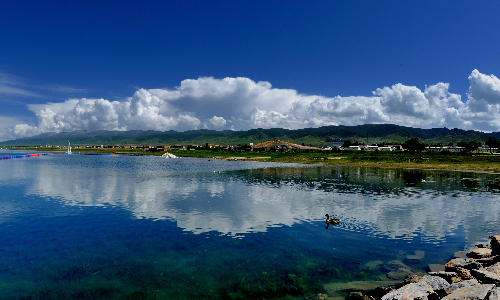
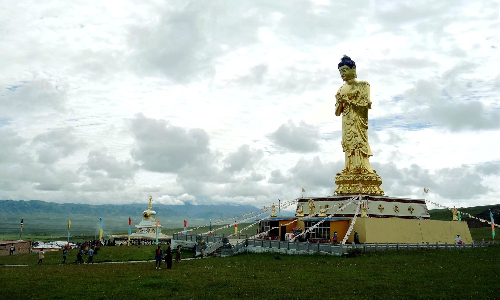
Today, we will continue to cycle around the Heima River. The Heima River is the optimal place to see the sunrise over Qinghai Lake. So if you can wake up early, don’t miss it! Today you will get a very relaxing riding experience. Enjoy the beautiful scenery along the way while riding. You can also stop to take some pictures and enjoy a pleasant day.
Riding along the road, you will finally get to Bird Island, the birds’ paradise, to watch kinds of birds. The reason why Bird Island has become an ideal home for birds is mainly because of its unique geographical conditions and natural environment. The terrain is flat, the climate is mild and it is surrounded by a lake on three sides. In addition, it boasts lush aquatic plants and many fishes. According to their habits and hobbies, the birds choose different places here to build their homes.
Then you will be driven back to the hotel in Xining. Please pack up your luggage and have a good rest. As you are leaving tomorrow, please be ready for the long flight.
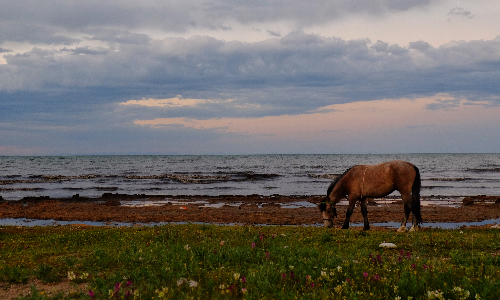
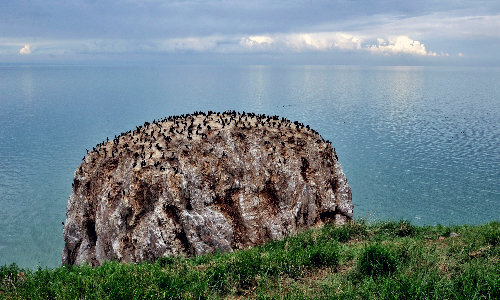
According to your international flight schedule, our guide and driver will pick you up at the hotel and transfer you to the airport on time. We wish you a pleasant homebound journey. Looking forward to serving you again in the future.
Author: Zhang Liya
Proofreader: Betsy He
| City | Five Star hotel list | Four Star hotel list |
|---|---|---|
| Beijing | Sunworld Dynasty Hotel Beijing Wangfujing | Sunworld Hotel Wangfujing |
| Xining | Sofitel Xining | Holiday Inn Xining Hot-Spring |
| Heima River | Guest House | Guest House |
 |
![]() About your child or infant, please contact us for a discounted price.
About your child or infant, please contact us for a discounted price.



We started with a few days in Beijing & ended in Shanghai, from where we visited the Forbidden City and Great Wall. In between we visited Terra Cotta Warriors Museum, Panda Base, Shanghai Disneyland.

We had a wonderful holiday in China which will remain long in the memory. China is a breathtakingly beautiful country full of splendid temples and palaces, mountains and rivers, peaceful rural scenes and bustling shopping streets.
 QUICK ENQUIRY
QUICK ENQUIRY